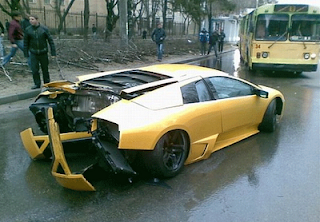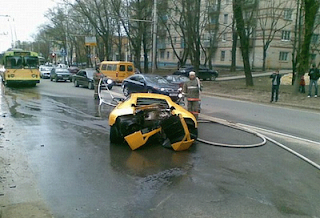
A local high school student's invention of an ultraviolet sterilizer to kill germs in vehicles has won him local and international awards and may be put to use in public transport in the future.
Guo Haijun, 18, has just returned home after winning two prizes at the 2009 Intel International Science and Engineering Fair, the world's largest pre-college science competition, held in the United States last month.Guo, a senior student at a Luwan District high school, has applied for a patent for his invention and some taxi companies have already shown interest in the innovative device.
"I came up with the idea about two years ago," Guo said. "Many taxi drivers and passengers are prone to coughs and flu."
Guo suspected that microbe contamination in the public vehicles could be the cause. He carried out studies on public transport with his schoolmates from March last year to February this year. They collected air samples from three taxis companies, eight bus routes and four Metro lines over the past year.
"We collected more than 7,000 samples from 1,280 taxis, buses and Metros," he said.
Using a local university laboratory, they found bacteria responsible for causing sneezing and the common cold in quantities exceeding the national standard in many vehicles. Germs in taxis were 5.12 times more concentrated than national standards, while those in buses were 3.04 times worse. Microbes in subways were found to be within the national limit.
"My device can kill 83 percent of bacteria in vehicles within 30 minutes," Guo said. "It costs about 80 yuan (US$12)."
Using three ultraviolet lamps and a timer taken from a fan, Guo created a device small enough to fit unobtrusively into a taxi.Drivers can operate the device when outside the vehicle using a remote control to avoid exposure to ultraviolet rays.Guo applied for the patent for the device last year, but he has no intention of selling it yet.
Wearing a pair of glasses, a school uniform and a pair of white running shoes, Guo looks no different from his peers - who view him as a future scientist.The invention has brought him domestic science prizes, but Guo paid a hard price for it - in order to devote time to the invention, he gave up playing the violin.
"Most of the time, research and experimenting are boring," Guo said. "But it becomes more exciting when you start to make a little progress."

















































